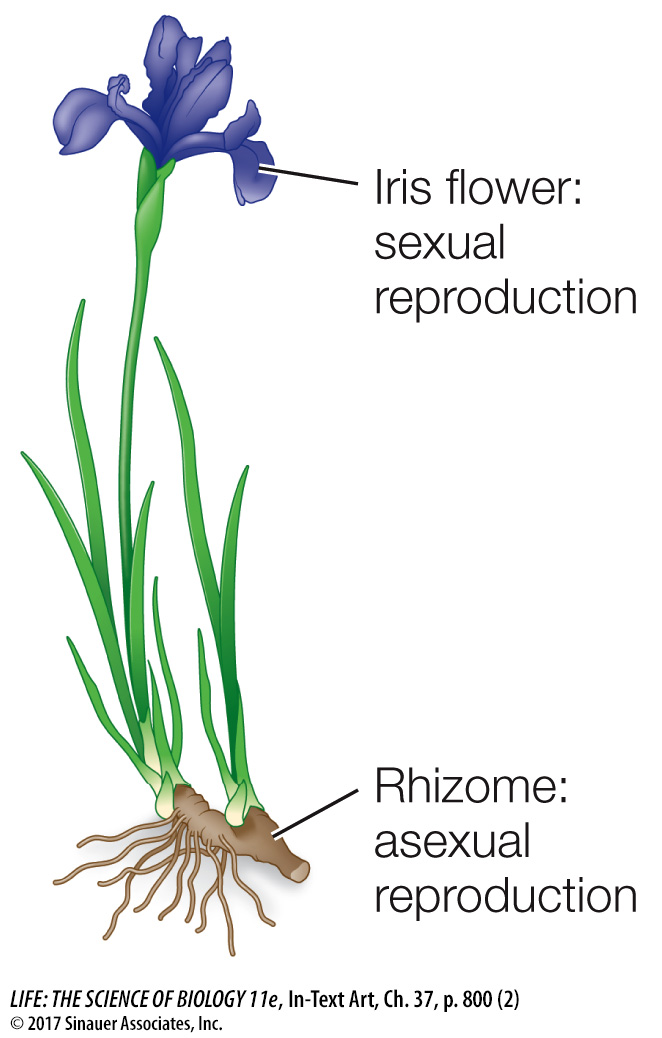key concept 37.3 Angiosperms Can Reproduce Asexually
Although sexual reproduction takes up most of the space in this chapter, asexual reproduction accounts for many of the individual plants present on Earth. This fact suggests that in some circumstances asexual reproduction must be advantageous. In fact, many plants reproduce both asexually and sexually. An example is the iris plant, which has beautiful flowers for sexual reproduction but also a rhizome (an underground stem) from which new plants can arise asexually.
focus your learning
Sexual and asexual reproduction provide separate and distinct advantages to plants.
Asexual, or vegetative, reproduction in plants occurs by changes in vegetative (nonreproductive) organs.
In apomixis, flowers produce clones; the technique has the potential to produce self-
reproducing hybrids.

We have noted that genetic recombination is one of the advantages of sexual reproduction. Self-
Asexual reproduction eliminates genetic recombination altogether. A plant that reproduces asexually produces progeny genetically identical to the parent. What, then, is the advantage of asexual reproduction? If a plant is well adapted to its environment, asexual reproduction allows it to pass on to all its progeny a superior combination of alleles, which might otherwise be separated by sexual recombination.